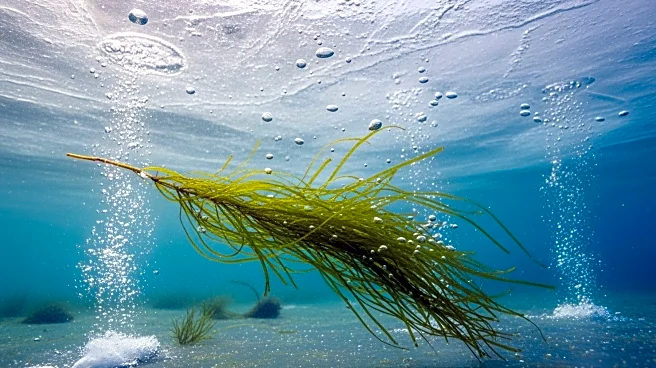What's Happening?
Researchers from the University of Copenhagen have discovered that nitrogen fixation occurs beneath Arctic sea ice, a process previously thought impossible due to poor living conditions for the organisms
involved. This finding suggests that more nitrogen may be available in the Arctic Ocean than previously believed, potentially increasing algae production as climate change reduces sea ice cover. Algae, which form the base of the marine food web, rely on nitrogen to grow. The study found that non-cyanobacteria, rather than cyanobacteria, are responsible for nitrogen fixation in the Arctic, particularly along the ice edge where melting is most intense. This discovery could reshape the future of marine life in the region and influence the amount of carbon dioxide the ocean can absorb.
Why It's Important?
The discovery of nitrogen fixation beneath Arctic ice has significant implications for the region's ecosystem and global climate change. Increased algae production could enhance the Arctic Ocean's ability to absorb carbon dioxide, potentially mitigating some effects of climate change. Algae serve as a primary food source for small marine animals, impacting the entire food chain. This new understanding of nitrogen availability challenges previous models and suggests that the Arctic's future may be more dynamic than anticipated. The findings underscore the complexity of biological systems and the need to incorporate nitrogen fixation into climate models predicting the Arctic's future.
What's Next?
Researchers emphasize the importance of including nitrogen fixation in models predicting the Arctic's future as sea ice declines. The net effect on climate remains uncertain, but understanding this process is crucial for accurate predictions. Further studies are needed to explore the long-term impacts on the Arctic ecosystem and global climate. Scientists will likely continue to monitor nitrogen levels and algae production to assess the broader implications of this discovery.
Beyond the Headlines
The study highlights the intricate balance of Arctic ecosystems and the potential for unexpected positive outcomes from climate change. While the melting ice is often seen as catastrophic, it may also create conditions that support life in new ways. This discovery prompts a reevaluation of how environmental changes can lead to both challenges and opportunities for adaptation.












